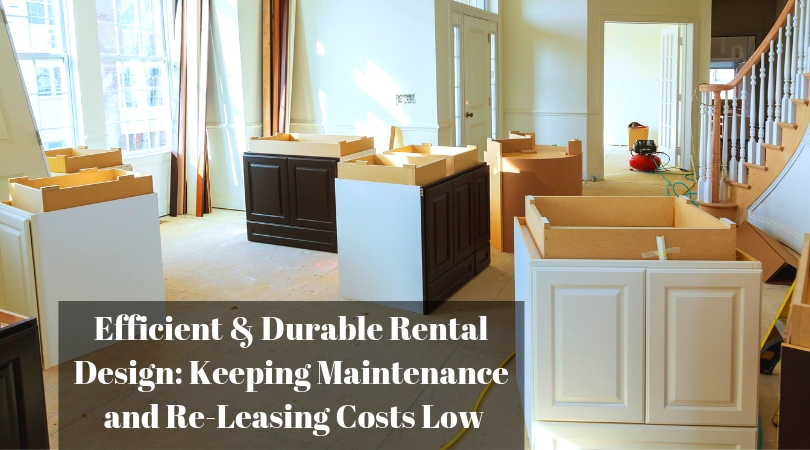If you’re holding your rental property with the intention of making a profit, it’s valuable to consider green and sustainable design strategies to minimize your operating expenses, reduce capital expenses, and improve tenant demand. In most cases, sustainable design requires minimal additional expense and stands to reduce your costs and risks in rental property ownership. The reduction in energy expense and cost of replacing damaged flooring, counters, and appliances lends to a fast payback period on upfront renovation cost and long-term tenant satisfaction.
Durable Materials
Tired of replacing and refinishing indoor surfaces and landscaping every time a tenant moves out? Look to durable materials and xeriscaping to keep your costs low and improve tenant appeal at the time of re-leasing. Consider the typical condition of rentals in the community and the standard level of finishes expected by clients. When you’re shopping for counters, flooring, paint, and other finishes and fixtures, look for those that are of sufficient quality, resistant to staining/abrasion and are green certified and regionally sourced. Examples of durable materials include vinyl flooring, latex paint, and recycled glass or Corian counter tops. Regarding outdoor areas: keep it simple and use native plantings that require minimal watering, upkeep, and catch the eye of prospective tenants.
Building Envelope, HVAC, Moisture Control and Air Quality
Keeping warm, cool, and preventing major moisture-related repairs has a lot to do with air and it’s quality within an interior space. To prevent the loss of conditioned air, and wasted energy on heating and cooling, make sure there is weatherstripping around all doors and windows, and if the budget permits, replace all windows with new Low-E dual-pane gas-filled windows. Keeping the Sun out is as important as keep the heating and cooling in!
Whenever possible, also update/upgrade HVAC units to SEER16 minimum, and apply appropriate R-value insulation to ducting, as well as water pipes. Don’t forget a simple and low-cost upgrade: a digital/programmable thermostat. Another important feature to consider is equipment that reduces indoor moisture to prevent mold, mildew and rot in walls, ceilings, and subflooring. Effective solutions include heat exchangers, dehumidifiers, and hydrostatic sensors for exhaust fans in bathrooms and kitchens.
Energy Efficient Lighting & Appliances
Even if you’re not paying the electric bill for your tenants, it’s good to install LED lighting. It’s cost effective, environmentally friendly, required by code (in many instances), and appeals to modern tenants. The same applies to Energy Star appliances, such as refrigerators, dishwashers, and clothes washers, that are also typically more durable than unrated appliances. Another great strategy that works in conjunction with LED lighting are occupancy sensors that automatically turn lights on and off according to the presence of people in the room. Tenants appreciate the convenience and it can cut energy expenses drastically.
Reduced Risk and Enhanced Demand
Take these design strategies, which won’t cost significantly more in the short term, to save yourself a tremendous amount on operating expenses and re-leasing costs when it’s time to find a new tenant. Aside from saving you on operating expenses, energy efficient design and durable materials will protect you from excessive and unexpected capital expenditures, as well as having the benefit of keeping your tenants happy and vacancy rates low.



